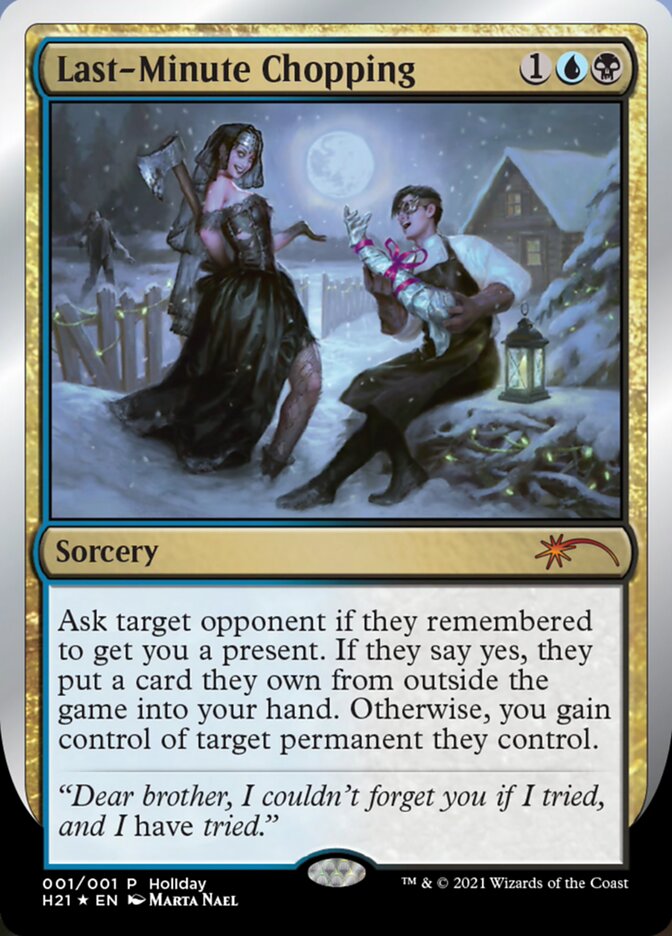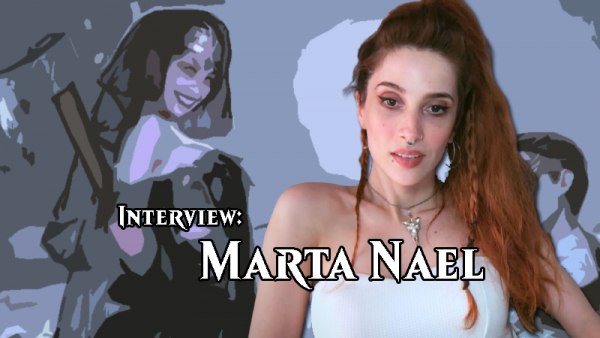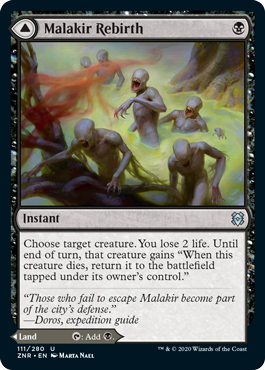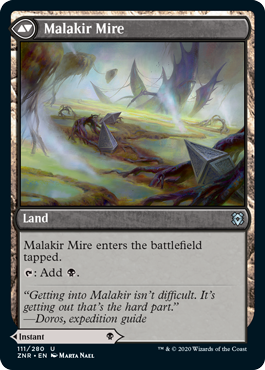Magic: The Gathering artist Narta Nael joins Magic Untapped for a Q&A.
Creating artwork not just for Wizards of the Coast's flagship title, Magic: The Gathering, Bareclona's Marta Nael has been as fixture in the art world for more than a decade, having also created pieces for Blizzard, Deep Silver, and ImagineFX.
She graciously took time out of her busy schedule to participate in a Q&A with Magic Untapped to talk about her art, influences, and more.
Magic Untapped: What inspirations and influences in your life drove you to becoming a professional artist?
Marta Nael: Like many kids, I used to spend most of my time drawing. One of my teachers in school suggested to my parents to enroll me in an art school, and that’s how I started my art journey. I always knew what I wanted to be as a grown up. But the main reason was that I was a nerd as a kid, so all I wanted was to learn how to create the art that I saw in video games and sci-fi and fantasy movies.
MU: How did you get your start with Magic?
MN: Growing up most of my friends played Magic. So it was always a dream of mine to become one day an illustrator of those cards. It was one of my main artistic goals for years. I had the opportunity to visit Lightbox Expo in LA in 2019.
There were a few artists doing portfolio reviews there, and I got the chance to have one.
A few weeks after I got contacted by one of the art directors, asking me if I wanted to do work for them. It was truly a dream come true.
MU: How long do you typically spend on a piece?
MN: It depends on the piece but on average it usually takes me around a week.
The part that takes most of my time is blocking in the main composition, pose and narrative of the image in an initial sketch.
After that it’ s all about adding detail.
MU: Have you ever tried a more "out of the box" approach to a card where you try a new perspective or style?
MN: My process used to be way more chaotic right before joining Magic as an artist.
That led to generating some discomfort every time I was creating a new piece, having to go through some sort of mentally and emotionally draining process. I usually ended up feeling stuck at some point in the process, and not being sure how to proceed. I realized that the reason behind that was due to making decisions in the middle of the process, and the end result was very different from the start.
However, right after joining Magic, I decided to completely change my approach and start sketching directly in color, and solving every problem at an early stage: the composition, the light and color, the mood, the narrative, the pose of the characters, the face expression, etc, everything needed to be solved in that initial sketch and readable at card size almost as finished, to avoid further problems later in the process.
All that was left to do after that was adding detail to the piece.
That ‘controlled’ approach made the process way easier from an emotional point of view. As an artist, you’re creating something out of nowhere, and even if you have some sort of image in your head of what your illustration will end up looking like, that can be overwhelming. So, having an initial sketch where every possible option has already been analyzed and discarded, and every decision has been made, makes the process way easier, knowing that even if at some point you might feel like the painting you have in front of you is not that great, you have to trust your process and believe that the final image will still work, because the sketch worked already at card size from the very beginning.
I want to deliver the same quality in each card so I would not try a different approach or style unless otherwise asked by the art director.
MU: Since making your Magic debut in the latter half of last year in Zendikar Rising with the double-faced card Malakir Rebirth/Malakir Mire, you've done artwork for nearly another 20 more. What have you learned about the process of making Magic art since the creation of that first piece
MN: I’ve learned that even the slightest decision has to be made up front, during the initial sketch stage. I used to leave the background more unfinished in the initial sketches at first. But soon I realized that having to figure out the background later in the process and making it work with the rest of the piece was a struggle.
Also, I’ve realized it is very important to not send those sketches you’re not totally happy with, since you will regret it later. Besides, since you have to wait quite a lot of time until the card is released, when the card is out, it makes you relive that feeling of not having done a good job.
Also, I’ve learned to use better references. I like shooting a lot of references now, as opposed to what I used to do two years ago when I started working for Magic.
MU: You also did the artwork for this year's holiday promotional card, Last-Minute Chopping. Was the experience any different for you in creating such a light-hearted and humorous card art versus the more serious-toned cards found typically found in a Magic set?
MN: It was a different experience indeed. I had never done art with such a humorous tone before, so it was a challenge achieving the poses and expressions who served for that purpose.
 Also, I’ve always loved Gisa and Geralf, so it was an honor for me to be trusted with such task. It was the first time I was painting legendary characters that already existed in the Magic lore, so I’m really grateful to the art director Ovidio Cartagena for allowing me to paint that card.
Also, I’ve always loved Gisa and Geralf, so it was an honor for me to be trusted with such task. It was the first time I was painting legendary characters that already existed in the Magic lore, so I’m really grateful to the art director Ovidio Cartagena for allowing me to paint that card.
MU: Do you have a favorite art medium? If so, does it make fantasy artwork harder or easier to create?
MN: I love both digital and traditional painting, but for practical reasons I usually tend to do digital work. Digital allows me to be able to change things easily in case some changes are requested by the art director. If I had to stick to one specific reference it would not make much of a difference whether I was using traditional or digital. However, I’d love to start creating traditional paintings for Magic in acrylic, probably starting with one-on-one reproductions first, before trying to paint the card directly traditionally.
MU: What kinds of things are more tricky for you to create (landscapes, people creatures, etc.)?
MN: I guess really dynamic scenes are kind of tricky for me to create. I love painting figures just standing there showing a strong attitude and their character. Whenever there has to be a strong action or narrative or dynamic gesture it’s a bit harder for me to achieve a result with the same overall quality. I’d also like to add that it is not so much about whether or not some kind of things are trickier than others, but more about what you prefer to paint. I love painting badass women, angels, vampires or spirits/geists for example. So whenever I get those, I’ll always start the painting being more motivated than if I paint creatures or landscapes for example.
MU: You have published art tutorials and given a number of workshops. What advice can you give to an aspiring artist who wants to make art a career?
MN: Usually my advice is to never give up, keep working and learning, revisiting fundamentals from time to time, setting goals, and then trying to create images that are similar in quality to those they do at the company you want to end up working for. For aspiring Magic artists, for example, my advice is to create a portfolio with paintings that are readable at card size and that have a clear narrative, illustrating what the card is supposed to show.
MU: What are some of the projects on which you are working currently that Magic players should be on the look out for? Do you have any future projects you are excited about? Shall we expect more Magic: The Gathering card arts from you in the years to come?
MN: Well, I’ve just started selling Magic proofs with a sketch on their back side!
Other than that, I’m currently mostly focused on creating new Magic art. I’ve been painting mostly just Magic art for the entire past year, so there’s many more cards to come this next year. If I’m allowed to do so for the rest of my life, I’d be the happiest.
Thank you to Marta for participating in this interview.











